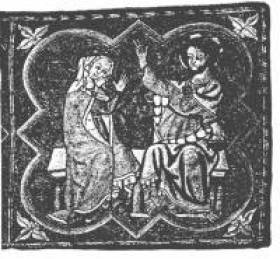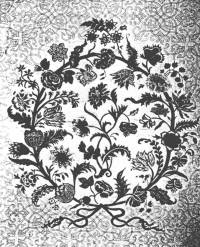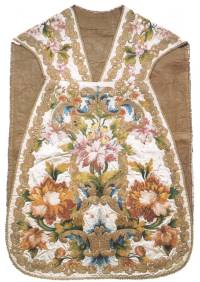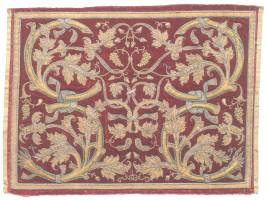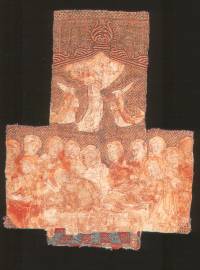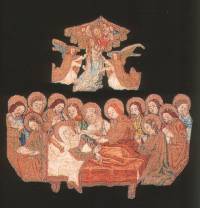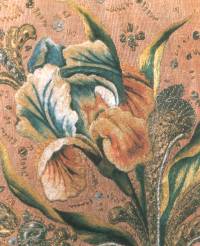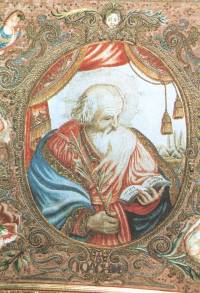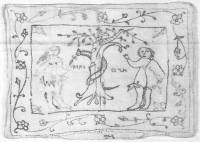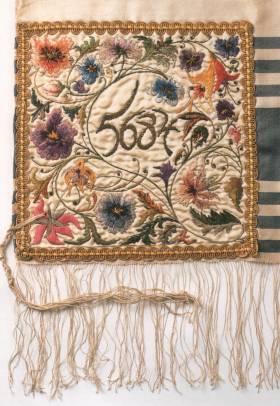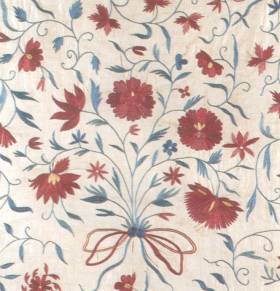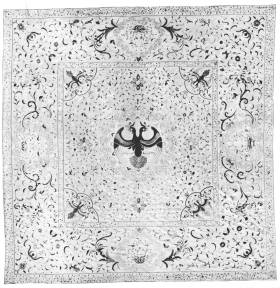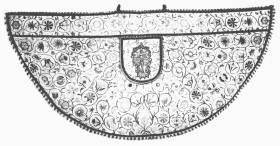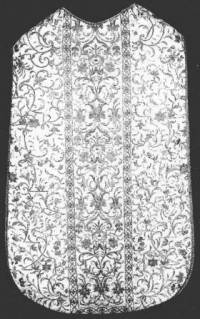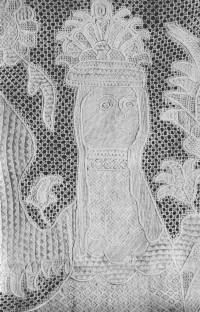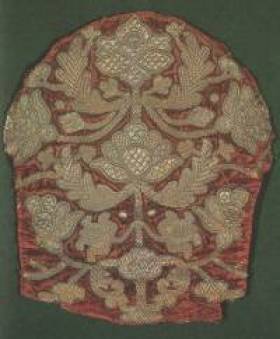Title of the exhibition: Samplers 29
April - 31 August 1997
Octagon, Fitzwilliam Museum, Trumpington Street,
Cambridge
Opening times: Tuesday-Saturday 10.00-17.00, Sunday
14.15-17.00, Closed Mondays, admission freeTitle of the book: Samplers
author: Carol Humphrey
Fitzwilliam Museum Handbooks, Cambridge, 1997,
ISBN 0-521-57300-9
Further information from:
Carol Humphrey, Honorary Keeper of Textiles, Fitzwilliam
Museum, Cambridge.
Tel: +44 (0)1223 332 900 Fax: +44 (0)1223 332 923
Fiona Brown, Press Officer, Fitzwilliam Museum,
Cambridge, CB2 1RB
Tel: +44 (0)1223 332 941 Fax: +44 (0)1223 332 923
Press Release.
This exhibition coincides with a new publication in the
Fitzwilliam Museum’s handbook series called
Samplers, which has been written by the Museum’s
Honorary Keeper of Textiles, Carol Humphrey and published
by Cambridge University Press. All the samplers pictured
in the book will be on display.
The Fitzwilliam Museum is fortunate in having received
two major bequests of samplers from collectors with
varying viewpoints and will be exhibiting a selection of
these and others.
Samplers have been worked
wherever embroidery has enjoyed a sustained popularity as
a decorative art, however, it is only in the last 100
years or so that they have been seriously collected.
Almost a third of the Museum’s sampler collection
comes from the bequest of Dr J W L Glaisher FRS - better
known for his collecting of pottery and porcelain - and
another significant portion from the bequest of Mrs
Longman.
Dr Glaisher’s collection, received
by the Musem in 1928 was collected mainly at a time when
samplers were not widely sought and it is clear that he
intended to collate a comprehensive, dated selection of
examples from the seventeenth century. The result was a
wealth of dated samplers giving sound chronological
evidence of the changing style, including one piece
dating from 1629 which was the earliest known dated
example until 1960, when the Victoria and Albert Museum
purchased a sampler by Jane Bostocke from 1598.
Mrs Longman’s bequest supplemented
Dr Glaisher’s collection and widened its scope. She
was part of the publishing family and there is evidence
from her letters that she asked her well-travelled
friends and relatives to look out for possible additions
to her collection on their trips abroad. In this way she
managed to acquire a number of continental examples and a
more cosmopolitan (if less focussed) collection than Dr
Glaisher’s.
The combination of these
two bequests, plus the addition of a number of English
and Continental samplers over the years has resulted in a
range unusual in a single collection. The Museum’s
collection therefore represents an important holding in
the history of this particular art form.
| This
catalogue (see Newsletter No 5, p.8) shows 2
examples of pulled threadwork. One in combination
with hollie point, and the other one of a later
period, 1830 Whitework Sampler:
T.139-1938, 22 x 24,5cm
English, 1719, March 13, 1719 / Iohanna SPeRINCK.
Linen. Embroidered with linen and silk threads in
buttonhole and chain stitch with pulled thread
work and hollie point fillings.
Hollie point is very english. It was a popular
trimming or insertion for infants’ clothing
and christening sets but was not adopted in
Europe. It is suggested that the sampler was
worked by a young woman whose family had settled
in England or one who has come from the continent
to work as a governess.
|
| Whitework
Sampler T. 4-1939, 12 x 30,25cm, German or
Danish, 1853, Initials F.J. R.Z., Cotton.
Embroidered with white cotton in chain stitch,
with panels of pulled work. With the return of
more elaborate styles in the 1830s, the more
complex whitework techniques enjoyed a revival
and were again in demand for their traditional
purposes. The needlewomen display similar levels
of expertise, even if the style of work is
separated by decades of changing taste. |
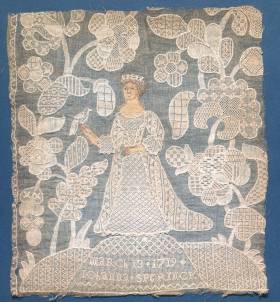
English,
March 13, 1719 / Iohanna SPeRINCK
|
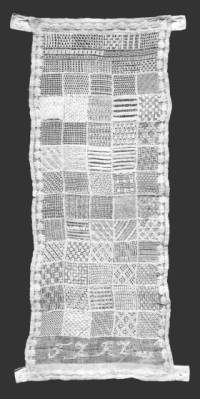
|
|
